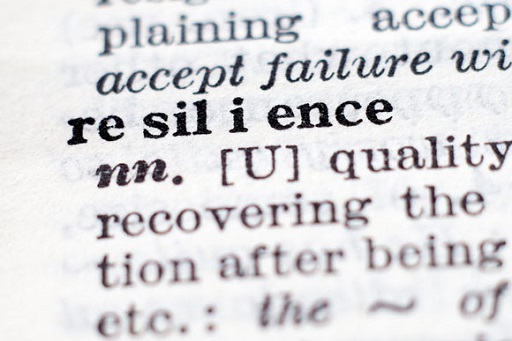1 Defining resilience
In a seminal paper on resilience in human development, Masten (2001, p. 235) argues that resilience comes from ‘the everyday magic of ordinary, normative human resources’ and not from rare or special qualities, suggesting that it is attainable for all of us. Originating from the Latin phrase to rebound or recoil (Masten, Gewirtz and Sapienza, 2013), the term ‘resilience’ has had many definitions proposed over the years (Sisto et al., 2019).
Despite the use of multiple terms to describe resilience, there is consensus among researchers that resilience is best understood when examined in a particular context as models of resilience developed in other domains, such as business, might not be transferable, for example to sport (Wagstaff et al., 2017).
Box _unit2.2.1
In simple terms, resilience is ‘the ability to use personal qualities to withstand pressure’ (Fletcher and Sarkar, 2016, p. 136).
In the sporting context, resilience relates to an athlete’s ability to manage daily stressors, where stressor is defined as ‘the environmental demands (i.e., stimuli) encountered by an individual’ (Fletcher, Hanton and Mellalieu, 2006, p. 359) and could include training and competition.
Evidence suggests that resilience is one of the key psychological characteristics for athletic success (Rees et al., 2016). In Activity 2 you will investigate resilience in a sporting context in more detail.
Activity _unit2.2.1 Activity 2 But what does it all mean? Making sense of resilience
Read the reading at the link below, which is a section of a chapter called ‘Developing resilience on the athlete’s journey’ (Howells, 2022).
Reading: What is resilience? [Tip: hold Ctrl and click a link to open it in a new tab. (Hide tip)]
Then complete the following tasks:
1. What are the two fundamental components of resilience agreed by researchers?
Discussion
The two fundamental components of resilience are:
- adversity (perceived negative experience)
- positive adaptation.
2. Match the correct definition to the terms: ‘robust’ and ‘rebound’ resilience.
Two lists follow, match one item from the first with one item from the second. Each item can only be matched once. There are 2 items in each list.
-
Robust
-
Rebound
Match each of the previous list items with an item from the following list:
a.Refers to resilience providing protection to an athlete which supports wellbeing and performance levels when under pressure.
b.Refers to the bounce-back qualities that are reflected in the minimal impact that adversity has on an athlete’s wellbeing and/or performance.
- 1 = a,
- 2 = b
3. From your reading, complete interactive Figure 1 below. Click on the image or ‘View interactive version’ to access it.
4. Why are these five psychological factors (Figure 1), evident in the elite athletes who were interviewed in Fletcher and Sarkar’s (2012) research, important for withstanding the pressure of performance?
Discussion
Fletcher and Sarkar (2012) argued that these factors could protect athletes from the potential negative effects of stressors by using positive evaluations, or challenge appraisals, and meta-cognitions (the evaluation of their own thoughts). Figure 1 is helpful to see the relationship between the five factors and challenge appraisal and meta-cognition.
As you have seen in Activity 2, researchers suggest that resilience isn’t a trait (Galli and Vealey, 2008) but it is thought that athletes high in resilience possess certain psychological characteristics, such as confidence, that ‘protect’ them and enable them to withstand the potential negative effect of stressors (Fletcher and Sarkar, 2012).
It is also worth noting that these protective factors (referred to as psychological factors in Figure 1) are often referred to as the third component of resilience, to add to adversity (or stressor) and positive adaptation as you will see as you move through the course.
Now you have started to explore resilience as a concept, you’ll now look at what a resilient athlete and a resilient coach might look like.

